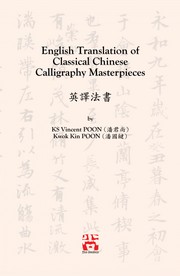Galleries and Translations > Models of Masterpieces >A model of "Elaborations on the Bio-graphy of Ni Kuan" 臨 褚遂良書 倪寬贊
A model of "Elaborations on the Bio-graphy of Ni Kuan"
(aka "Eulogy on the Chronicle of Ni Kuan")
(臨 褚遂良書 倪寬贊)
35 X 137cm (2) in Standard Script (楷書)
Historical information
(I)
Chu Suiliang’s (褚遂良, 596-658AD) Elaborations on the Bio-graphy of Ni Kuan is considered to be one of the finest standard script works in Chinese history. The piece is renowned for its elegance as well as its dynamic variations of thickness within each brushstroke. The original was long lost but a model of it can be observed in the National Palace Museum, Taipei, Taiwan. This model might not have been scribed according to Chu Suiliang’s original and was presumably written by an unknown calligrapher after Tang but before Song Dynasty, which was the Five Dynasties and Ten Kingdoms period (907–979AD).(1) Further, “韋玄成” was incorrectly scribed as “韋弘成” in the 37th column starting from the right.
(II)
The textual content of this artwork was extracted from the Book of Han (《 漢書 》), which was compiled by Ban Gu (班固, 32–92AD). Similar to Sima Qian’s elaborations (太史公曰) in Records of the Grand Historian (《 史記 》), the words seen in this artwork were Ban Gu’s personal elaboration at the very end of Biographies of Gongsun Hong, Bu Shi and Ni Kuan (公孫弘卜式兒寬傳) in Volume 58 of the Book of Han (《 漢書 》 卷五十八); they illustrated and compared imperial court personnel between the administrations of Han Emperors Wu (武帝) and Xuan (宣帝). Accordingly, it is wrong for those who interpret it as a eulogy since “贊” here should be interpreted as “說明(to elaborate)” not “稱頌(to praise/to eulogize)”(2).
(III)
Chu Suiliang was the son of Tang Dynasty scholar and officer Chu Liang (褚亮, 560-647AD) and was renowned for his “broad and extensive understanding of literature and history (博涉文史)” as well as his “adeptness in scribing the standard script (尤工隸書)”.(3) Wei Zheng (魏徵, 580-643 AD) once remarked Chu Sui-liang’s calligraphy was “vigorous and powerful, very much bearing the form of Wang Xizhi’s calligraphy (下筆遒勁,甚得王逸少體)”.(4) Tang Emperor Taizong (唐太宗, 598-649 AD) recognized Chu’s talents, appointed him to high office as a close adviser, and relied heavily on his many recommendations.(5) During Taizong’s final moments, Taizong valued deeply Chu’s steadfast loyalty (忠烈) and so entrusted Chu to assist his son and successor, Emperor Gaozong (唐高宗, 628-683AD), in governing the country.(6)
Chu Suiliang’s later years was rather turbulent and bitter, however. His staunch and unwavering objection against Emperor Gaozong’s designation of Concubine Wu (昭儀武氏) as the Queen (Concubine Wu later became Empress Wu Zetian 武則天who overthrew Tang to become the first and only Empress in Chinese history) ultimately led him to be demoted and ousted from the imperial court.(7) He died shortly thereafter at the age of 63.
(IV)
Chu Suiliang’s elegant, honest and compelling style of calligraphy was certainly attributed to his noble, righteous, and unwavering temperament. This is what Sun Guoting (孫過庭) in his renowned A Narrative on Calligraphy (書譜) described calligraphy as “the culmination of the principles of righteousness, and so those who are wise, talented and virtuous should be able to write good calligraphy as well (固義理之會歸,信賢達之兼善者矣)”(8) and a “testament of living through the fickleness of the mundane world while maintaining one’s noble integrity unaltered throughout the times (驗燥濕之殊節,千古依然)”(9). Chu Suiliang’s calligraphy is certainly one of the very best examples to demonstrate this philosophy in the history of Chinese calligraphy. Another is Yan Zhenqing’s (颜真卿, see A Poem on General Pei).
Text translation
1. 漢興六十餘載,海內艾安,府庫充實。
The Han Dynasty had been established with much prosperity for over sixty years; pervasive calm and peace (艾安)(10) was observed under the administration throughout the land and the treasury was ample and sufficient.
2. 而四夷未賓,制度多闕。
Yet, surrounding barbarous tribes from all directions (四夷)(11) remained defiant to Han’s rule, and her various institutions had many deficiencies.
3. 上方欲用文武,求之如弗及。
4. 始以蒲輪迎枚生,見主父而歎息。
5. 羣士慕嚮,異人並出。
6. 卜式拔於芻牧,弘羊擢於賈竪;
7. 衛青奮舊於奴僕,日磾出於降虜;
8. 斯亦曩時版築飯牛之明(朋?)已。
9. 漢之得人,於茲為盛。
10. 儒雅則公孫弘、董仲舒、兒寬;
11. 篤行則石建、石慶; 質直則汲黯、卜式;
12. 推賢則韓安國、鄭當時;
13. 定令則趙禹、張湯;
14. 文章則司馬遷、相如;
15. 滑稽則東方朔、枚臯;
16. 應對則嚴助、朱買臣;
17. 歴數則唐都、洛下閎;
18. 協律則李延年, 運籌則桑弘羊;
19. 奉使則張騫、蘇武;
20. 將率則衛青、霍去病;
21. 受遺則霍光、金日磾。其餘不可勝紀。
22. 是以興造功業,制度遺文,後世莫及。
23. 孝宣承統,纂修洪業,亦講論六蓺。
24. 招選茂異,而蕭望之、梁丘賀、夏侯勝、韋弘(玄)成、嚴彭祖、尹更始以儒術進;
25. 劉向、王襃以文章顯;
26. 將相則張安世、趙充國、魏相、丙吉、于定國、杜延年;
27. 治民則黃霸、王成、龔遂、鄭弘、召信臣、韓延壽、尹翁歸、趙廣漢、嚴延年、張敞之屬;
28. 皆有功迹見述於世。
29. 參其名臣,亦其次也。
The Emperor (Emperor Wu of Han, 漢武帝, 157BC-87BC) desired to apply talents of Wen and Wu (文武)(12) in governing and couldn’t wait to seek them as if it were too late to do so (求之如弗及)(13).
FOR FURTHER TRANSLATION, FOOTNOTES, AND ELABORATIONS
PLEASE SEE :
English Translation of Classical Chinese Calligraphy Masterpieces 英譯法書
by KS Vincent POON and Kwok Kin POON (Feb. 2019)
ISBN 978-1-7753221-1-5
There are currently no satisfactory English translations of prominent classical Chinese calligraphy masterpieces (法書, exemplary works that are worth for all to study and observe) like Cao Quan Stele (曹全碑) and Lanting Xu (蘭亭帖). This is the first book that offers line-by-line English translations of the following five Chinese calligraphy masterpieces along with detailed annotations and explanations using historical reference books and texts:
- 1. Cao Quan Stele (曹全碑) by an unknown calligrapher (185AD);
- 2. Lanting Xu (蘭亭帖) by Wang Xizhi (王羲之, 303-361AD);
- 3. Elaborations on the Chronicle of Ni Kuan (兒寬贊帖) by Chu Suiliang (褚遂良, 596-658AD);
- 4. A Poem on General Pei (裴將軍帖) by Yan Zhenqing (顏真卿, 709- 785AD);
- 5. Huai Su’s Autobiography (懷素自叙帖) by Huai Su (懷素, 725-785 AD or 737-799 AD).
Previous attempts by renowned scholars such as Patricia Ebrey (in translating Cao Quan Stele) and LIN Yutang (林語堂, in translating Lanting Xu) contain significant errors and omissions and will be briefly discussed in this book. Hence, serious learners of Chinese calligraphy as well as scholars studying traditional Chinese culture will find this book particularly useful.
WORLDCAT/LIBRARY: [Worldcat] [Columbia U] [HKU] [CUHK] [Universiteit Antwerpen] [Wesleyan U] [Kyoto U] [National Taiwan U]